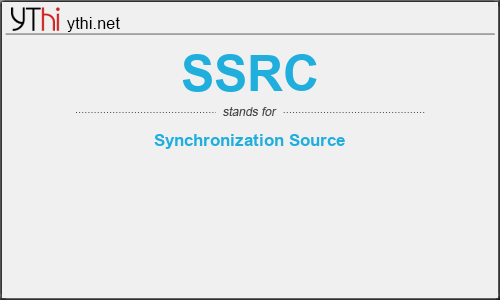What does SSRC mean? What is the full form of SSRC?
The full form of SSRC is Synchronization Source
In a Real-time Transport Protocol (RTP) session, the Synchronization Source (SSRC) assists in determining the source endpoint, typically when an endpoint sends multiple media streams that need to be synchronized (e.g., audio and video lip-sync). SSRC identifies the synchronization source (simply called the source). This identifier is chosen randomly and is intended to be unique among all sources of the same RTP session. If a source changes its source transport address, it must also choose a new SSRC identifier.
The source of a stream of RTP packets, identified by a 32-bit numeric SSRC identifier carried in the RTP header so as not to be dependent upon the network address. All packets from a synchronization source form part of the same timing and sequence number space, so a receiver groups packets by synchronization source for playback. Examples of synchronization sources include the sender of a stream of packets derived from a signal source such as a microphone or a camera, or an RTP mixer. A synchronization source may change its data format (for example, audio encoding) over time. The SSRC identifier is a randomly chosen value meant to be globally unique within a particular RTP session. A participant need not use the same SSRC identifier for all the RTP sessions in a multimedia session; the binding of the SSRC identifiers is provided through RTCP. If a participant generates multiple streams in one RTP session, for example from separate video cameras, each MUST be identified as a different SSRC. See [RFC3550] section 3.
SSRC
means
Synchronization Source![]()
Translate Synchronization Source to other language.


Leave a Reply
You must be logged in to post a comment.